The Namib Desert is one of the most surreal and beautiful landscapes on Earth. Stretching along Namibia’s Atlantic coastline for over 2,000 kilometers, it is widely recognized as the world’s oldest desert, dating back at least 55 million years. This vast expanse of golden sands, fiery red dunes, stark white clay pans, and rugged coastlines creates a dreamlike setting that feels otherworldly.
For travelers who are drawn to places of unmatched natural beauty, the Namib Desert is a destination that promises unforgettable adventures and photographic opportunities. It is a place where silence reigns, horizons stretch endlessly, and nature tells stories of resilience and survival.
Where is the Namib Desert? Location & Geography
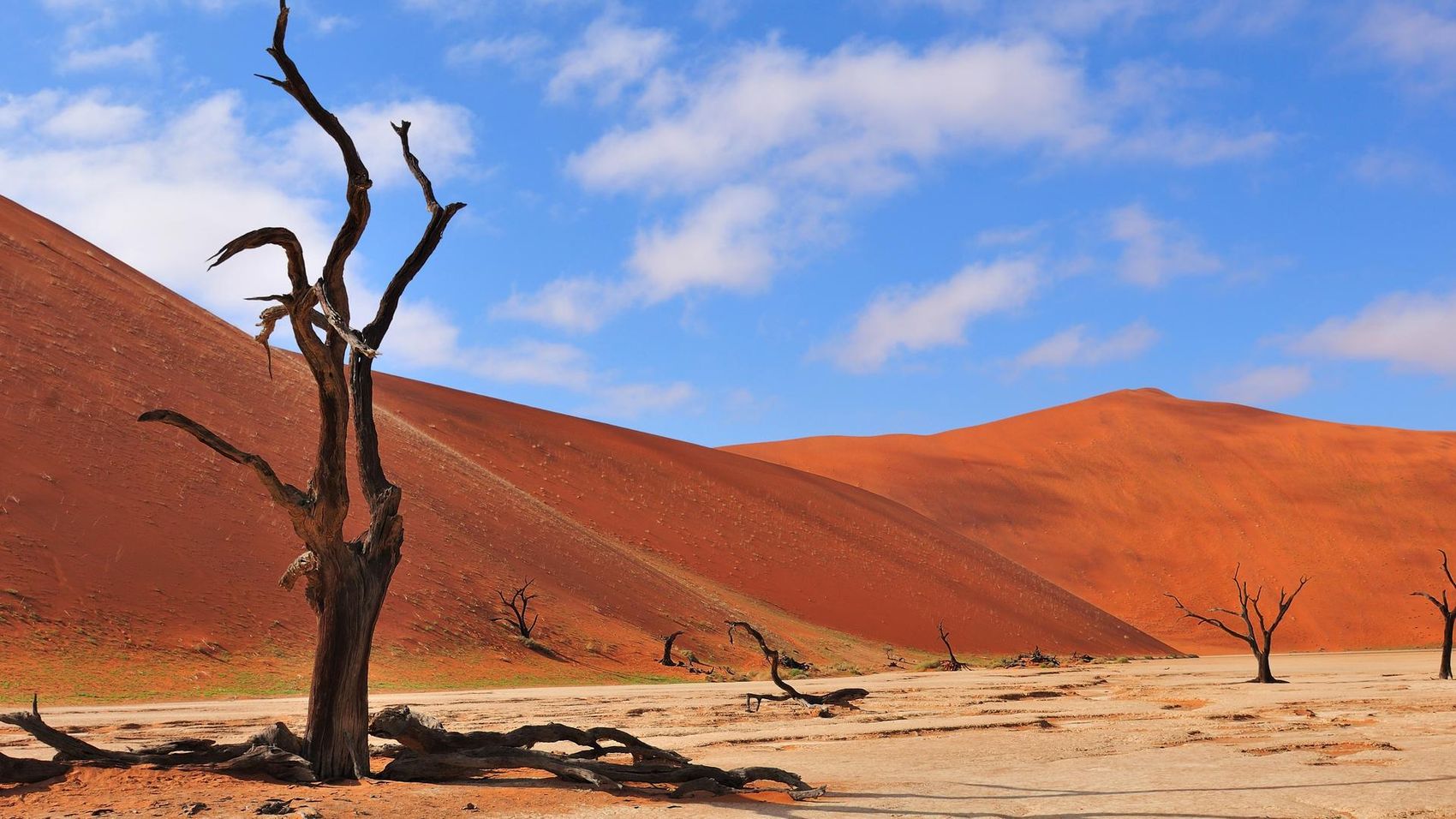 The Namib Desert runs along the Atlantic Ocean, covering parts of Angola, Namibia, and South Africa. Its most iconic section lies within Namibia, where the desert meets dramatic mountain ranges and merges into world-renowned sites like Sossusvlei and Deadvlei.
The Namib Desert runs along the Atlantic Ocean, covering parts of Angola, Namibia, and South Africa. Its most iconic section lies within Namibia, where the desert meets dramatic mountain ranges and merges into world-renowned sites like Sossusvlei and Deadvlei.
Key highlights of its geography include:
- Namib-Naukluft National Park – one of the largest protected areas in Africa.
- Sossusvlei – a clay and salt pan surrounded by towering dunes.
- Skeleton Coast – a hauntingly beautiful shoreline littered with shipwrecks.
- Sesriem Canyon – a natural canyon carved by the Tsauchab River.
In 2013, the Namib Sand Sea was declared a UNESCO World Heritage Site, recognizing its ecological and geological significance.
Why the Namib Desert Should Be on Your Travel List
There are countless reasons why travelers are captivated by the Namib Desert. Here are just a few:
- Dramatic Landscapes: Towering dunes that glow in shades of red, orange, and gold during sunrise and sunset.
- Photographic Paradise: Contrasts between blackened dead trees, white clay pans, and red dunes make for striking images.
- Unique Ecosystem: Plants and animals have evolved extraordinary adaptations to survive extreme aridity.
- Sense of Timelessness: With minimal human interference, the desert offers a rare chance to experience untouched wilderness.
For adventurous travelers seeking destinations that are both gorgeous and awe-inspiring, the Namib Desert is truly unmatched.
Top Attractions in the Namib Desert
Sossusvlei and the Famous Red Dunes
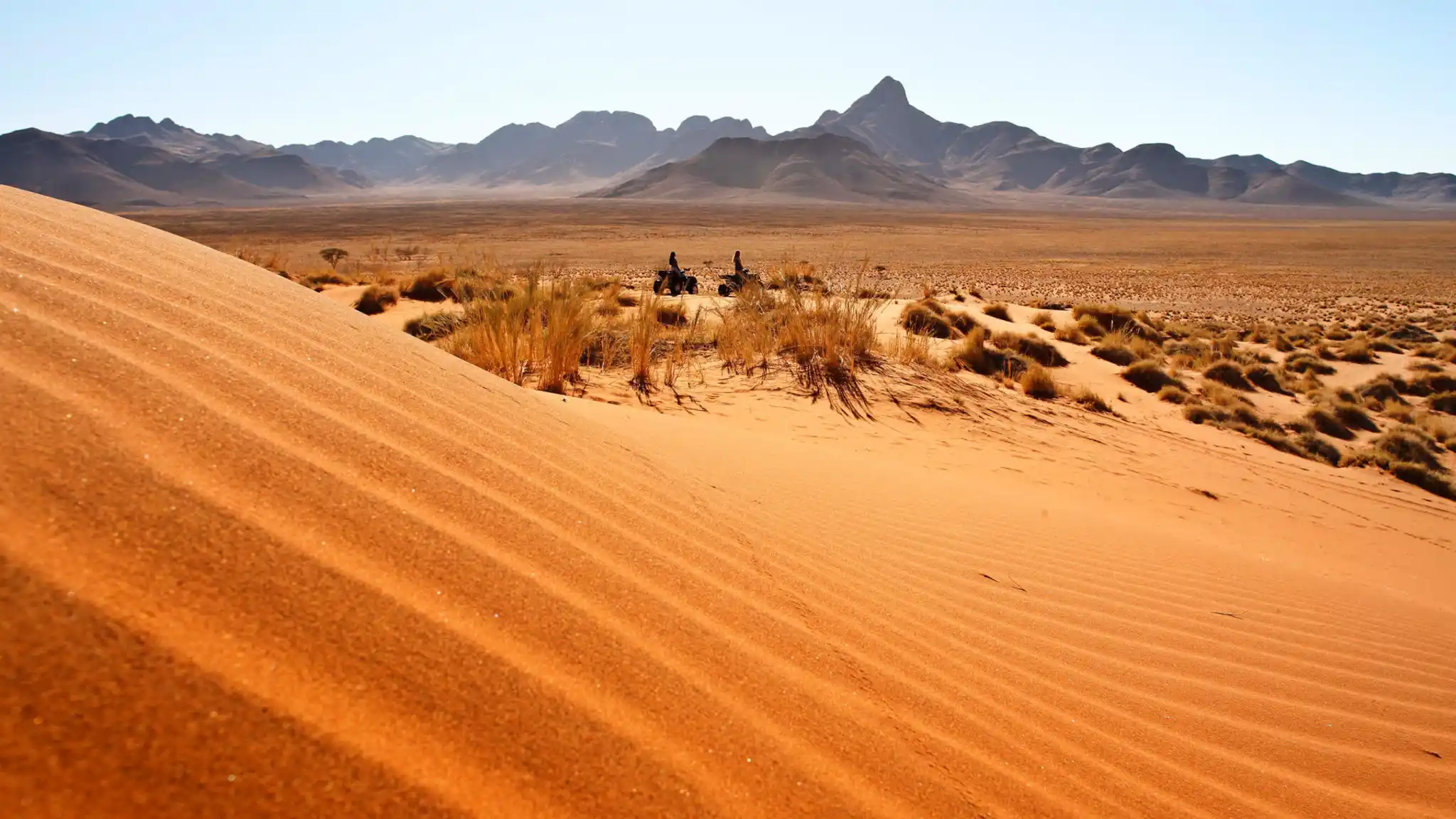
Sossusvlei is the heart of the Namib Desert and the most photographed area of Namibia. Visitors come here to climb the famous dunes:
- Dune 45 – easily accessible and a favorite for sunrise hikes.
- Big Daddy – one of the tallest dunes in the world, rewarding climbers with sweeping desert views.
The play of light and shadow across the dunes during sunrise and sunset is nothing short of magical.
Deadvlei: Namibia’s Most Iconic Landscape
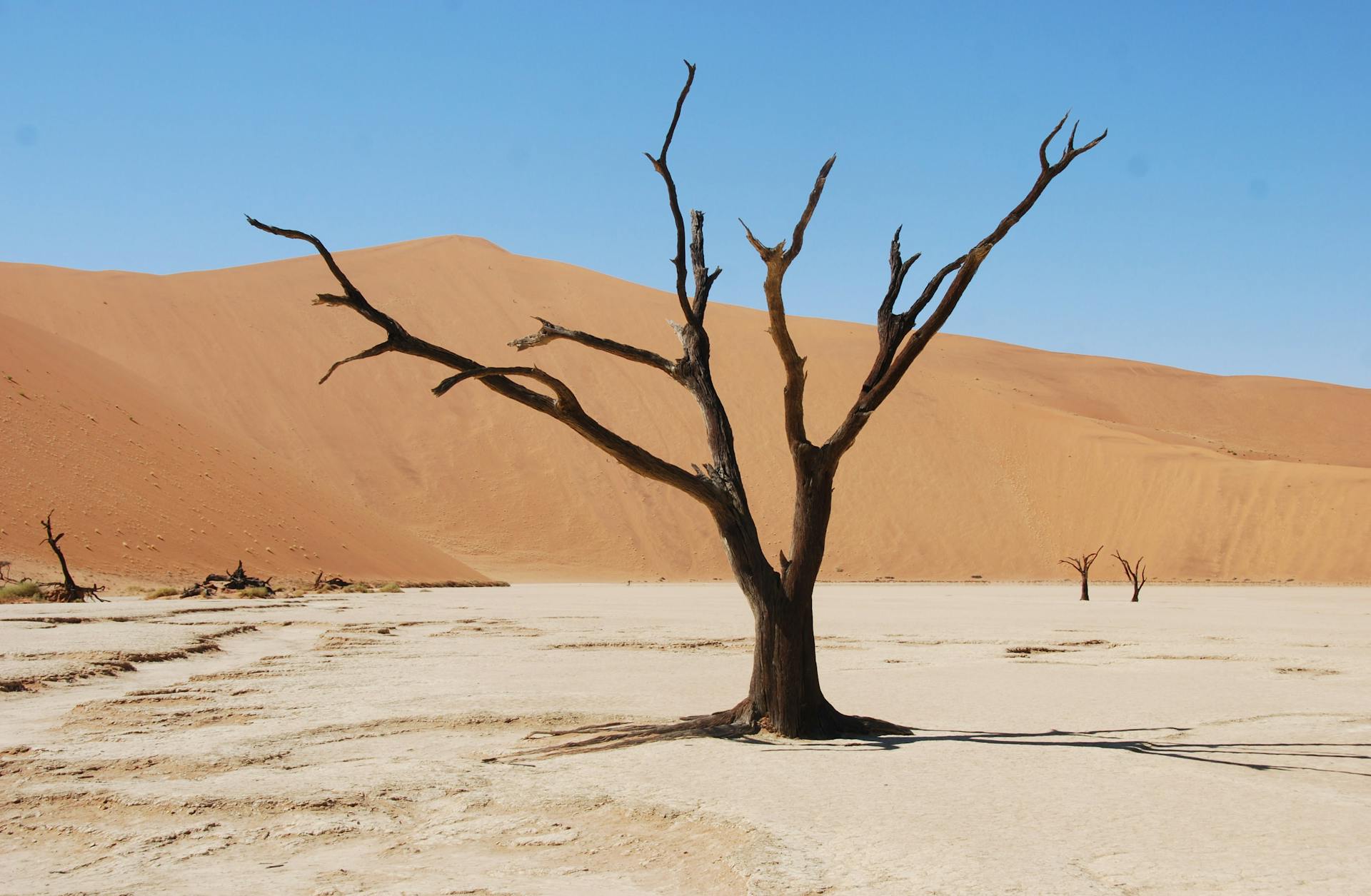
Just beyond Sossusvlei lies Deadvlei, a white clay pan dotted with ancient, blackened camel thorn trees that died nearly 900 years ago. Preserved by the desert’s dryness, these skeletal trees stand as striking silhouettes against red dunes and blue skies. It is perhaps the single most iconic image of Namibia.
Namib-Naukluft National Park
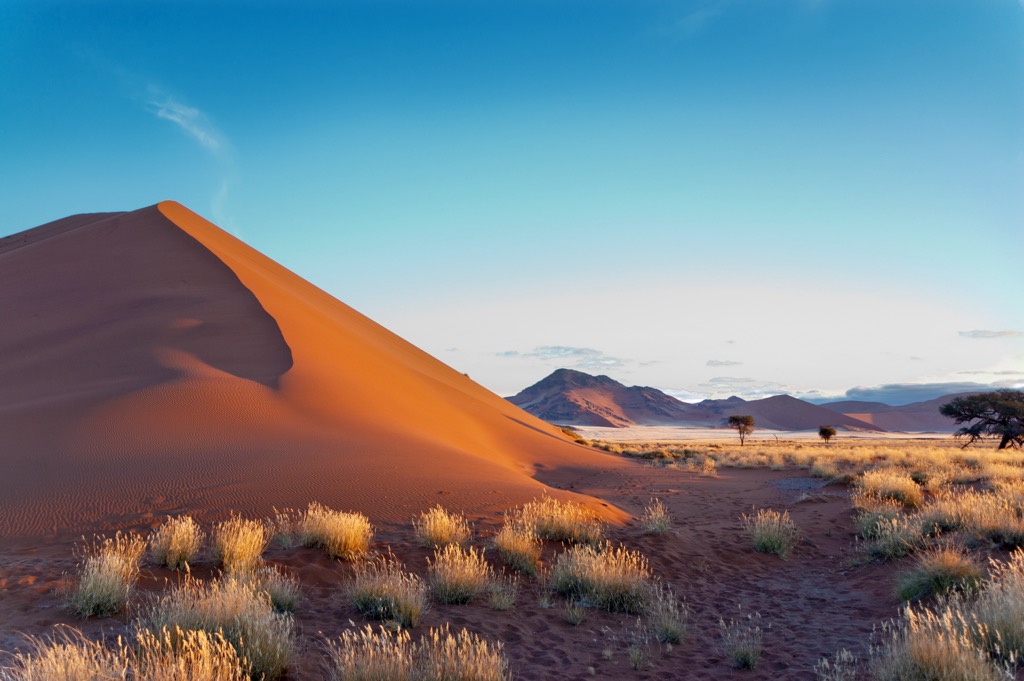
Covering nearly 50,000 square kilometers, Namib-Naukluft National Park is one of the largest protected areas in Africa. Visitors can explore hiking trails, see desert wildlife like oryx and springbok, and enjoy stargazing in one of the clearest night skies in the world.
Skeleton Coast
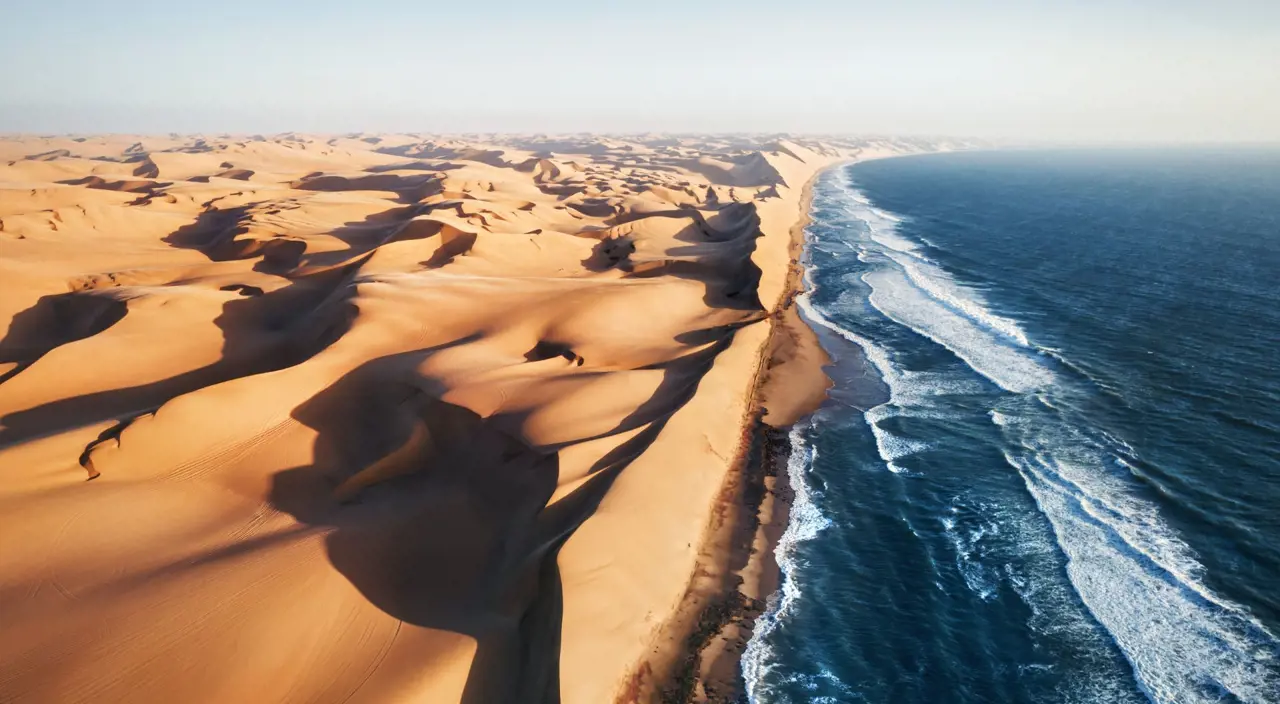
The Skeleton Coast is both eerie and fascinating. Its name comes from the many shipwrecks scattered along the foggy coastline, where shifting sands and cold ocean currents create hazardous conditions. This area is also home to thriving seal colonies and unique desert landscapes.
Sesriem Canyon
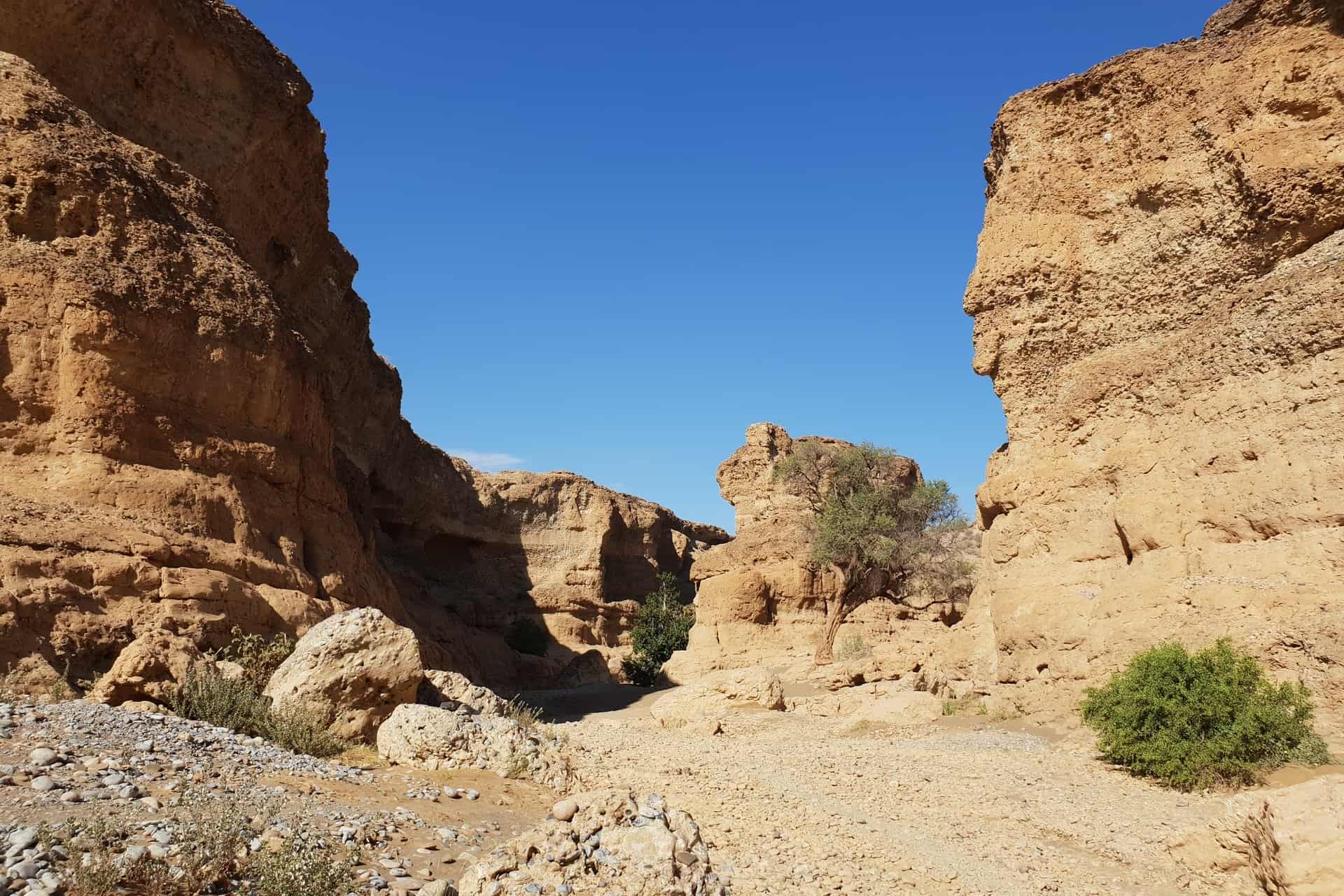
Located near the entrance to Sossusvlei, Sesriem Canyon was carved by the Tsauchab River over millions of years. Unlike the open dunes, this canyon offers a shaded, narrow path that is ideal for hiking.
Unique Experiences in the Namib Desert
Travelers to the Namib Desert can enjoy more than just sightseeing. Some of the most memorable activities include:
- Hot Air Balloon Rides: Floating silently above the desert at sunrise offers breathtaking panoramic views.
- 4x4 Desert Adventures: Guided tours allow travelers to reach remote areas safely.
- Stargazing: The Namib Desert has some of the darkest skies on Earth, making it ideal for astronomy enthusiasts.
- Cultural Encounters: Meeting Namibia’s indigenous Himba communities provides insight into traditional desert lifestyles.
Best Time to Visit the Namib Desert
The Namib Desert can be visited year-round, but the best time depends on traveler preferences:
- May to September (Winter): Cooler temperatures, clearer skies, and more comfortable hiking conditions.
- October to April (Summer): Hotter weather, but excellent for photography due to dramatic skies.
For most travelers, the dry winter months are the most enjoyable time to explore, as the heat is less intense.
Wildlife and Plant Life of the Namib
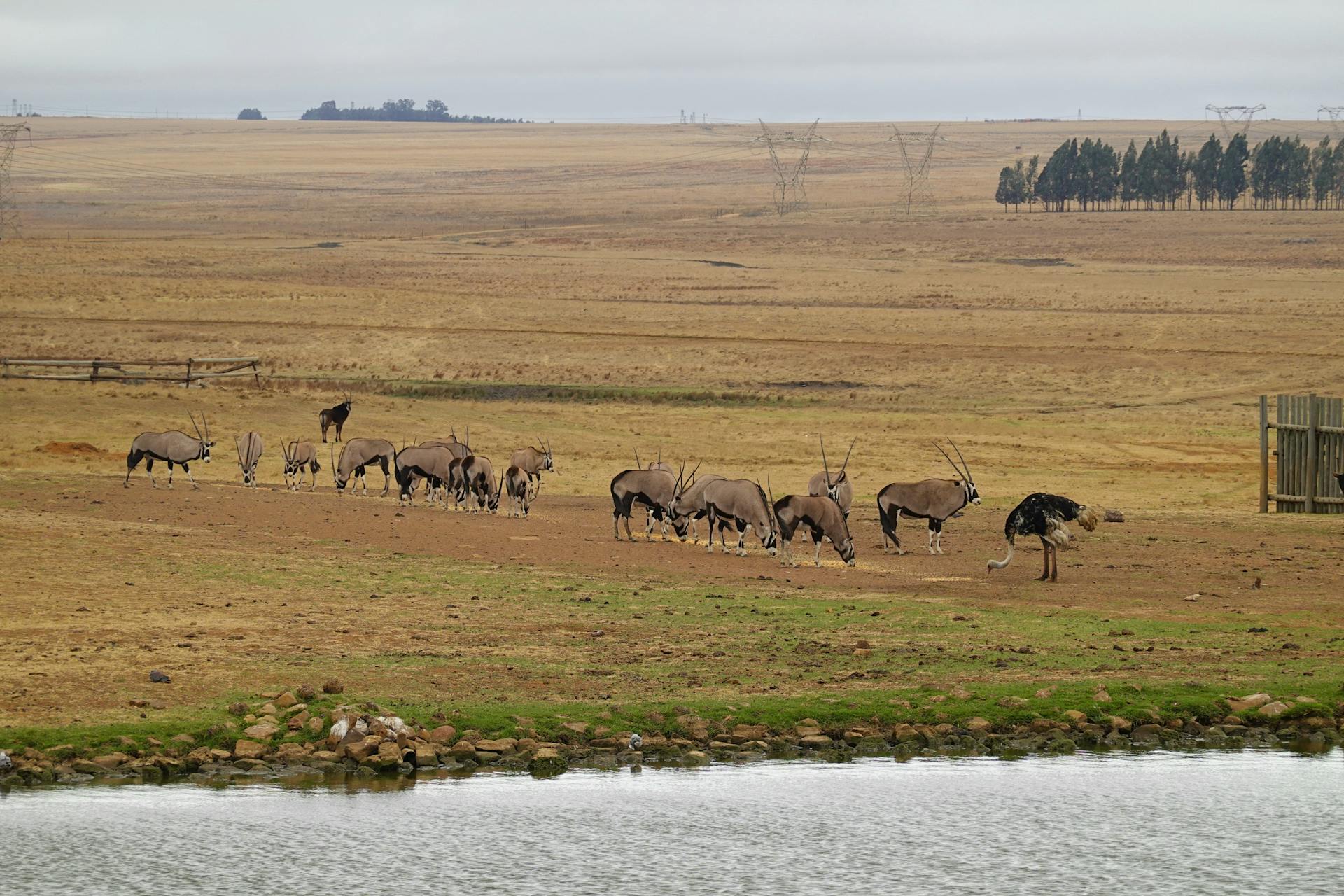
Despite its arid conditions, the Namib Desert supports an incredible range of life:
- Animals: Oryx, springbok, desert-adapted elephants, geckos, and jackals thrive here. Some species rely on fog from the Atlantic for water.
- Birdlife: Ostriches and various raptors can be spotted.
- Plants: The Welwitschia mirabilis, often called a living fossil, can survive for over 1,000 years and is unique to this region.
This delicate ecosystem highlights nature’s ability to adapt and endure in extreme environments.
How to Get to the Namib Desert
Travelers typically start their journey from Namibia’s capital, Windhoek, or the coastal city of Swakopmund.
- By Road: A 5–6 hour drive from Windhoek to Sossusvlei. Renting a 4x4 vehicle is highly recommended.
- By Air: Charter flights are available for those seeking faster, more scenic routes.
- Guided Tours: Many operators offer multi-day tours covering highlights like Sossusvlei and the Skeleton Coast.
Self-driving offers freedom, but guided tours provide expertise and safety in remote desert areas.
Where to Stay in the Namib Desert
Accommodation options range from luxury to budget-friendly:
- Luxury Lodges: Exclusive properties such as &Beyond Sossusvlei Desert Lodge offer world-class comfort with stunning desert views.
- Mid-Range Options: Comfortable lodges near Sesriem provide easy access to Sossusvlei.
- Camping: For adventurous travelers, campsites allow close encounters with nature and incredible stargazing opportunities.
Booking in advance is highly recommended, especially during peak season.
Essential Travel Tips for Visiting the Namib Desert
To make the most of a trip to the Namib Desert, keep these tips in mind:
Packing List
- Lightweight, breathable clothing
- A wide-brimmed hat and sunglasses
- Strong sunblock
- Reusable water bottles
- Camera gear for photography
- Sturdy shoes for dune climbing
Safety Advice
- Always carry sufficient water.
- Avoid hiking during midday heat.
- Drive carefully on sandy or gravel roads.
- Respect wildlife and maintain safe distances.
Conservation Tips
- Stay on marked paths to protect fragile ecosystems.
- Do not remove plants, stones, or wood from the desert.
- Minimize waste and support eco-friendly lodges.
The Namib Desert is a destination that inspires awe at every turn. From the world’s tallest dunes to the haunting beauty of Deadvlei and the mystery of the Skeleton Coast, this desert captures the imagination of every traveler who visits.
It is more than a place of beauty – it is a living museum of natural history, resilience, and wonder. For travelers seeking destinations that are absolutely gorgeous and unlike anywhere else on Earth, the Namib Desert should be at the very top of the list.




